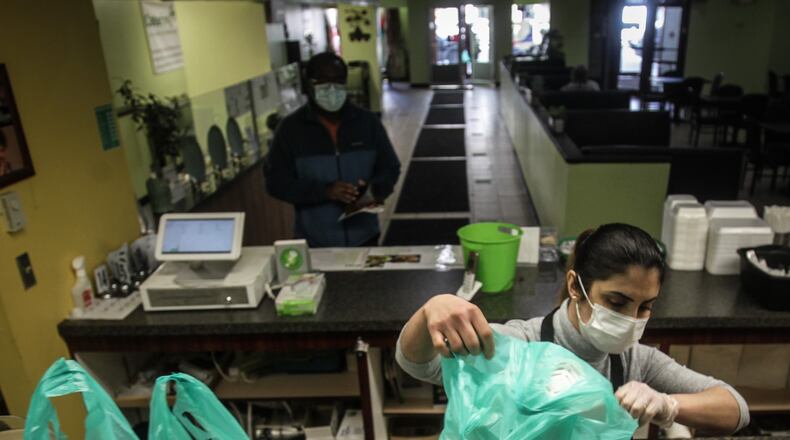Richard Stock, Business Research Group director at University of Dayton, expects in general most low and middle income households will be spending what they get because they are living paycheck to paycheck. He said he expects to see similar patterns as when the earned income tax credit funds are sent. For example, he said research shows that low income households experience a decrease in food insecurity in the months after the EITC tax refund comes through.
“They may spend to get themselves caught back up on their mortgage or rent, they may purchase more food staples, they will start to deal with health care issues they had put off,” Stock said. “The bottom line is that all of these expenditures that are designed to make the household more economically secure will wind up helping all of us over the long term because of the positive external benefits of the families spending to improve their economic security.”
A single filer making up to $75,000 will receive the full payment, while those earning up to $80,000 will get a reduced amount. Joint filers making up to $150,000 will get the full $2,800, while those earning up to $160,000 will receive a smaller amount.
One indication of where the money might be spent comes from the U.S. Census, which has been taking a Household Pulse Survey every two weeks to measure COVID-19 pandemic impact.
When the last similar payments came in the previous stimulus package, over half of Ohioans in the survey said that they used at least some of their payment for food, from groceries to eating out, 31% said they spent at least some of the money on household supplies or personal care products, 36% on utilities or telecommunications and 30% used some to pay down credit cards student loans or other debt. said Emily Campbell, associate director with Cleveland-based Center for Community Solutions, a health and human services think tank.
“People in Ohio use their last payment for the kinds of things that seemed to indicate that they needed a little extra to help them get by, you know, food utilities, household supplies, those kinds of things,” Campbell said.
Heather Seymour, Preble County domestic violence case manager, said a client received her payment, almost immediately on her prepaid debit card, and was able to flexibly use the money for what she specifically needed. Some went to help a child living out of state with a relative on a fixed income, some went for new school clothes now that another child’s school is resuming in person, and some helped paid out car insurance and other expenses.
“She got approved for housing yesterday. So now we are working on finding her new home, and she’s got that little bit of a cushion, you know, to cover any needs for that new home,” Seymour said.
Miranda Armstead, rural advocate with YWCA Dayton, based in Preble County, said it is common for the women they work with who are domestic or sexual abuse survivors to have experienced some kind of financial abuse so it is meaningful to have money and the freedom to spend on what they choose.
“The stimulus money is a one time payment right now and it’s not going to last forever, but for this moment it gets them some hope that they can be autonomous and do their own thing,” she said.
Alex Boehnke, spokesman for Ohio Council of Retail Merchants, said he’s hopeful that there will be a positive impact from the stimulus payments and help families buy items they’ve maybe been putting off. In the past, there was a boost in consumer spending after previous stimulus efforts.
“I think we’re certainly hopeful that that there will be a positive impact, and our members will be ready to provide those goods and services that that families are seeking,” Boehnke said.
Like with previously stimulus rounds, some nonprofits encouraged people who don’t need their payments to get buy to donate the money instead.
Michael Vanderburgh, executive director of St. Vincent De Paul, sent a email urging those who don’t need their check to donate toward the needs of homeless guests of the shelter.
“Maybe like me, you do not have a need for a stimulus check. Maybe that payment gives you an opportunity to provide care for the most vulnerable in our community,” Vanderburgh said.
How to check for your payment
You can check on when and how the IRS sent your 2021 Economic Impact Payment with the Get My Payment tool at irs.gov/coronavirus/get-my-payment.
About the Author

